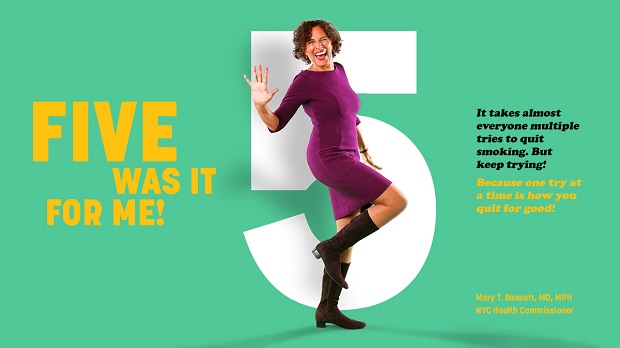Dr. Mary T. Bassett Talks Numbers
The NYCHA Journal talks to New York City Health Commissioner Dr. Mary T. Bassett about the “Your Number” Campaign.
New York City Health Commissioner Dr. Mary T. Bassett on the “Your Number” Campaign
1. What is DOHMH’s “Your Number” campaign all about?
“It’s hard to quit smoking, and it takes almost everyone multiple tries before they quit for good. It took me five tries before I quit for good. Quitting smoking is the most important thing you can do for your health, so this campaign is to remind New Yorkers that it’s ok if you don’t quit for good the first time. Just keep trying.”
2. What is the average number of years it takes an individual to quit smoking?
“Quitting is a challenge for most people. The average ranges anywhere from 6 attempts to more than 30 attempts, but it takes almost everyone who successfully quits more than one try. Relapsing is not a sign of failure. If you start smoking again, don’t be discouraged – just throw out your cigarettes and try quitting again.”
3. Is there evidence that those who try to quit in groups, with other friends or family members, are more successful?
“For some people, group counseling is very helpful. We strongly encourage smokers to try medications and talk to their doctor if they need more help quitting – medications can double their chances of success, especially with a prescription that’s tailored to them and their smoking history. Visit nysmokefree.com or call 1-866-NY-QUITS. The Health Department also launched a free app, NYC HelpMeQuit, to help people stop smoking. We developed the app with input from smokers trying to quit. It has a lot of fun features to help make quitting a little bit easier, like support from your friends and badges earned for reaching milestones on your journey to quit smoking.“
4. How can family members and friends best help a loved one quit?
“Be there to offer support when your loved one is ready to quit, but let them be the one to start the conversation. When they’re ready, help them change their routine or distract themselves to manage triggers and cravings. Create new morning and evening routines, like going on a walk together. As they make progress, recognize their success. Celebrate milestones with a special meal or outing, whether it has been one week or one month smoke-free. If they slip up and have a cigarette, stay positive and help them keep trying to quit. Remind them that it takes most smokers many tries to quit for good. They haven’t failed; they’ve learned more about their triggers and can try again.”
5. How can smokers address the triggers that contribute to smoking when they are trying to quit?
“For a smoker, reaching for a cigarette can be an automatic response to a feeling or a trigger. To quit successfully, it is important to learn strategies to take charge of the way you deal with those triggers, including stress. Even though it may not seem like it, exercising can help when you feel down or stressed. Start by doing something small a couple of times each week, even a short walk with a friend. Relaxation techniques, like breathing or meditation exercises, can also be helpful. Notice what your other triggers are, like coffee or your walk home from work, and try changing your routine. Drink your coffee on your way to work or switch to tea; take a new route home.”
6. Do you think exploring the history of tobacco smoking related to structural racism and other forms of discrimination can help motivate smokers to quit?
“The decision to quit is personal, and smokers have to decide for themselves that they are ready to go smoke-free. But everyone deserves to know the history of tobacco companies’ targeting of youth, women, and people of color. Using targeted marketing, giveaways, and false information, tobacco companies infiltrated our communities with their deadly product. The University of California San Francisco Library has a broad archive of tobacco industry documents that show the extent of these activities, which you can see for yourself here. One of the most disturbing stories found in these documents is a conversation with an executive from the R.J. Reynolds Tobacco Company who, when asked if he and his colleagues smoked replied, ‘Are you kidding? We reserve that right for the poor, the young, the black, and the stupid.’”
7. Would you talk a bit about your own experience with quitting smoking?
“I started smoking when I was just 16. At the beginning, of course, I was interested in the image. But like many young kids who try cigarettes, I became addicted. I smoked for years. I knew that this wasn’t good for me. I was a doctor in training before I finally stopped smoking cigarettes. It wasn’t easy. Nicotine is very addictive. But you can quit. I quit. My body felt better, and I also was no longer burdened with having to plan my life around making sure that I had a cigarette. We’re tough enough to quit. If anyone can quit smoking, it’s a New Yorker.”

